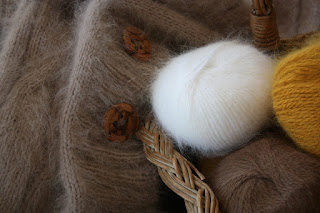
Angora wool: A fluffy warmth
The immensely soft, knitting wool fiber, renowned for its fluffiness and warmth is not produced by any goat, sheep or yak, the finished fabric provided to us comes all the way from a most pleasant and peacefull animal, a Rabbit. Known by the name Angora Rabbit is famous worldwide for the production of Angora Wool used to make sweaters, scarves and many more winter wears. The luxurious, shiny, lightweight and comfortable characteristics possessed makes it worth loving.
 |
| Loft and floting feel of angora wool |
 |
| Warmth and softness of Angora wool |
There are
different breeds found in different countries for production some of them are:
· English breed: Mainly of 2-3.5 kgs produces large amount of fur. It is needed to be combed regularly in order to have tangle and debris free.
The Angora Wool got banned due to its harvesting techniques and being cruel with animals. As in many production units the rabbits were being clipped and sheared for the fur and were left fully bald. Instead of those, later new ones initiated, in which the combing and pulling out gently made it permissible again. This is the best way since it is time consuming, could be done for several days as different areas of rabbit shed at different times, so would not left bald and does produce best fiber.
So lets have an Angora
Wool fabric in our collection for this winter.


Nice
ReplyDeleteThanku☺
DeleteI didn't know about this angora rabbit till now☺
ReplyDeleteThanku Mohit, we feel glad to be the first source.
DeleteA new and descriptive info
ReplyDeleteThanks
Most welcome.
Delete